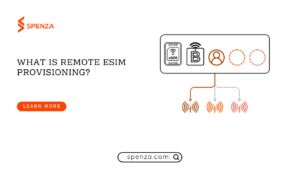Table of Contents
- What Is an MVNE?
- Understanding the Role of an MVNE
- How MVNEs Support Mobile Operators
- Why Businesses Need an MVNE
- Cost Savings and Reduced Capital Expenditures (CAPEX)
- Streamlined Network Integration
- Faster Time-to-Market
- Key Benefits of Partnering with an MVNE
- Access to Advanced Telecom Infrastructure
- Simplified Billing and Revenue Management
- Regulatory Compliance Made Easy
- Scalability and Growth Support
- Enhanced Customer Experience
- Challenges of Operating Without an MVNE
- High Infrastructure Costs
- Complex Network and IT Integrations
- Difficulties in Regulatory Compliance
- How to Choose the Right MVNE for Your Business
- Evaluating MVNE Capabilities
- Importance of Multi-Carrier Support
- Customization and Scalability
- Conclusion
- FAQs

Introduction
Imagine a world in which mobile services are available from any brand, not just the biggest telecom companies. A retail brand could introduce its own mobile network for exclusive customer benefits, a travel agency could offer worldwide connectivity as part of its package, and a fitness app could offer eSIM data plans for workouts while on the go.
This isn’t some far-off future. It is currently taking place. Businesses can now more easily enter the telecom market without having to deal with the high costs and complicated process of creating a network from scratch thanks to the growth of Mobile Virtual Network Enablers (MVNEs).
It takes more than just choosing a carrier and offering plans to launch a mobile service from the ground up. It needs:
- Building network infrastructure is costly and time-consuming
- Agreements with carriers: Months may pass during difficult negotiations
- Customer service and billing are ongoing operational challenges
- Regulatory compliance: Handling telecom laws in various jurisdictions
These obstacles make launching a mobile service too costly and complicated for the majority of businesses. A Mobile Virtual Network Enabler (MVNE) can help with that.
Why MVNEs Have the Potential to Change the Game
Working with an MVNE can save you money, time, and operational hassles if your company is thinking about launching a mobile service. Here’s how:
- Quicker market entry: Launch your mobile service in a matter of weeks rather than months.
- Reduced expenses: Steer clear of the substantial upfront expenditure required for telecom infrastructure.
- Streamline operations: Automating service management, billing, and customer onboarding.
- Regulatory compliance: Avoid the headache of staying ahead of legal and compliance requirements.
An MVNE enables companies to start, grow, and innovate without having to deal with the hassles of telecom operations.
What would you get by the end of the article?
To provide you with a comprehensive understanding of MVNEs and their worth, we will examine:
- The functions of an MVNE and their place in the telecom ecosystem
- The benefits of using an MVNE in terms of finances and operations
- How MVNEs enhance business scalability and customer experience
- Things to consider when picking a suitable MVNE partner
This guide will help you understand how the right MVNE partner can streamline operations, cut costs, and accelerate growth, regardless of whether you’re just getting started in the mobile space or are searching for a more intelligent way to scale your MVNO. Let’s get started.
What Is an MVNE?
Understanding the Role of an MVNE
A Mobile Virtual Network Enabler (MVNE) is a key player in the telecom industry that supports MVNOs by providing essential backend infrastructure and operational services. Unlike Mobile Network Operators (MNOs), which own and operate cellular networks, MVNEs do not own network infrastructure. Instead, they act as intermediaries that bridge the gap between MNOs and MVNOs.
How MVNEs Support Mobile Operators
MVNEs handle all the technical and operational aspects required to run a mobile service, including:
- Network Integration: Connecting MVNOs to MNOs for seamless access to voice, data, and messaging services.
- Billing & Customer Management: Providing automated billing systems, CRM tools, and payment processing solutions.
- Regulatory Compliance: Ensuring that MVNOs adhere to telecom regulations, security policies, and data privacy laws.
- SIM and eSIM Management: Enabling seamless SIM provisioning, activations, and customer onboarding.
By leveraging an MVNE’s expertise, businesses can launch mobile services faster, reduce costs, and focus on customer growth rather than dealing with network complexities.
Why Businesses Need an MVNE

Cost Savings and Reduced CAPEX
One of the biggest barriers to entering the telecom market is high capital expenditure (CAPEX). Setting up mobile infrastructure, acquiring spectrum licenses, and integrating network systems can require millions of dollars in investment. MVNEs eliminate these upfront costs by providing:
- Ready-to-use telecom platforms that eliminate the need for businesses to build infrastructure from scratch.
- Pay-as-you-go models, allowing MVNOs to scale operations without massive investments.
- Wholesale network access, reducing the cost of voice, data, and SMS services.
Streamlined Network Integration
Partnering with an MNO directly can be time-consuming and complex, involving:
- Lengthy contract negotiations
- Technical challenges in integrating voice, data, and messaging services
- Compliance with local telecom regulations
MVNEs simplify this process by offering pre-integrated network solutions, allowing businesses to launch their services within weeks instead of months.
Key Benefits of Partnering with an MVNE
1. Access to Advanced Telecom Infrastructure
MVNEs provide businesses with cutting-edge telecom infrastructure, supporting:
- eSIM technology for seamless SIM activations and international roaming.
- VoLTE (Voice over LTE) services for higher-quality voice calls.
- IoT connectivity for smart devices and machine-to-machine communication.
2. Simplified Billing and Revenue Management
Handling telecom billing manually can be a nightmare. MVNEs provide:
- Automated billing solutions that handle postpaid, prepaid, and hybrid plans.
- Real-time usage tracking, ensuring customers are billed accurately.
- Fraud detection and revenue assurance to prevent financial losses.
3. Regulatory Compliance Made Easy
Telecom regulations are constantly evolving, and failing to comply can result in heavy fines and service disruptions. MVNEs help businesses stay compliant by:
- Managing licensing and regulatory filings.
- Ensuring secure customer data handling (GDPR, CCPA, etc.).
- Providing KYC (Know Your Customer) and fraud prevention solutions.
4. Scalability and Growth Support
A major advantage of working with an MVNE is the ability to scale operations seamlessly. The right MVNE partner:
- Supports increasing subscriber volumes without performance issues.
- Expands coverage through multiple carrier integrations.
- Offers flexible pricing models to adapt to market changes.
5. Enhanced Customer Experience
MVNEs improve customer satisfaction through:
- Self-service portals, allowing users to manage their accounts easily.
- AI-driven customer support, reducing resolution times.
- Value-added services, such as loyalty programs and data rollover features.
Challenges of Operating Without an MVNE
Challenges of Operating Without an MVNE
- High Infrastructure Costs: Expensive network setup, including data centers, customer management systems, and billing platforms.
- Complex Network and IT Integrations: Managing multiple MNO contracts and integrating voice, data, and messaging services without a central platform.
- Difficulties in Regulatory Compliance: Navigating legal complexities across multiple regions without expert guidance.
How to Choose the Right MVNE for Your Business
How to Choose the Right MVNE for Your Business
Evaluating MVNE Capabilities
- Does the MVNE offer multi-carrier support?
- Can it handle eSIM, VoLTE, and IoT services?
- How robust is its billing and revenue management system?
Importance of Multi-Carrier Support
- More carrier options mean better coverage and pricing flexibility.
Customization and Scalability
- Choose an MVNE that allows custom plan creation and value-added services.
Conclusion
Starting and running a mobile service is a difficult task. Businesses can easily become overwhelmed by technical complexities, regulatory requirements, and operational inefficiencies in the fiercely competitive telecom sector if they lack the necessary infrastructure and expertise. A capable MVNE partner is crucial in this situation. A well-chosen MVNE can:
Cut Costs: An MVNE enables companies to introduce mobile services with little initial investment by doing away with the need for significant infrastructure investments. Businesses can use a turnkey solution that is already efficiency-optimized rather than creating billing systems, network integrations, and customer support platforms from the ground up.
Accelerate Market Entry: Delays in launching a mobile service can result in missed opportunities and lost revenue because time is money. Businesses can go live in a fraction of the time with a quality MVNE’s pre-built mobile network integrations, automated billing solutions, and smooth customer activation procedures.
Enhance the Client Experience: MVNEs improve the entire mobile service experience, from multi-carrier connectivity and real-time billing to AI-driven customer support. Consumers anticipate dependability, and an MVNE guarantees seamless
But not every MVNE is made equal. Selecting the ideal partner is essential to long-term success. Companies ought to seek out a supplier who provides:
- Scalability: The capacity to expand and change in response to changing business requirements.
- Flexibility: Options for customization that let companies set their services apart.
- Automation: tools to prevent fraud, automated billing, and insights powered by AI to optimize processes.
- Support for multiple carriers: To maximize coverage and minimize expenses is known as multi-network access.
Why Spenza?
By offering companies an AI-powered platform that is ready for the future and goes beyond conventional telecom enablement, Spenza is revolutionizing the role of an MVNE. Spenza gives companies the ability to easily launch and expand their mobile services through smooth multi-carrier integrations, automated cost optimization, real-time analytics, and cloud-native scalability.
Spenza provides the adaptability and intelligence needed to stay ahead, whether you’re an IoT provider in need of dependable worldwide connectivity, a retail brand wishing to offer branded SIMs, or an enterprise minimizing telecom expenses.
FAQs
An MVNE (Mobile Virtual Network Enabler) provides the technical and operational backbone that allows MVNOs (Mobile Virtual Network Operators) to function. While an MVNO focuses on branding, marketing, and customer service, an MVNE handles network integration, billing, SIM management, and compliance behind the scenes.
MVNEs provide a ready-made infrastructure, eliminating the need for businesses to negotiate direct agreements with network operators, build billing systems, or manage complex telecom integrations. This significantly reduces the time and cost required to launch a new mobile service.
Spenza stands out by providing advanced AI-driven analytics for cost optimization, automated billing and SIM lifecycle management, seamless multi-carrier integration, and a cloud-native architecture for scalability. Unlike traditional MVNEs that rely on rigid, outdated systems, Spenza offers businesses the flexibility and efficiency needed to launch and grow faster.
Spenza caters to diverse industries by enabling IoT providers to manage device connectivity across multiple networks, helping retail and eCommerce brands launch branded SIMs or eSIM data plans, supporting the travel and hospitality sector with seamless global roaming solutions, and assisting enterprises in reducing telecom costs through customized connectivity solutions.
Assess your business needs for technical support and network access. Choose an MVNE if you need technical capabilities, and an MVNA if you need network access.
Need an MVNE partner that aligns with your business vision? Let’s talk.






